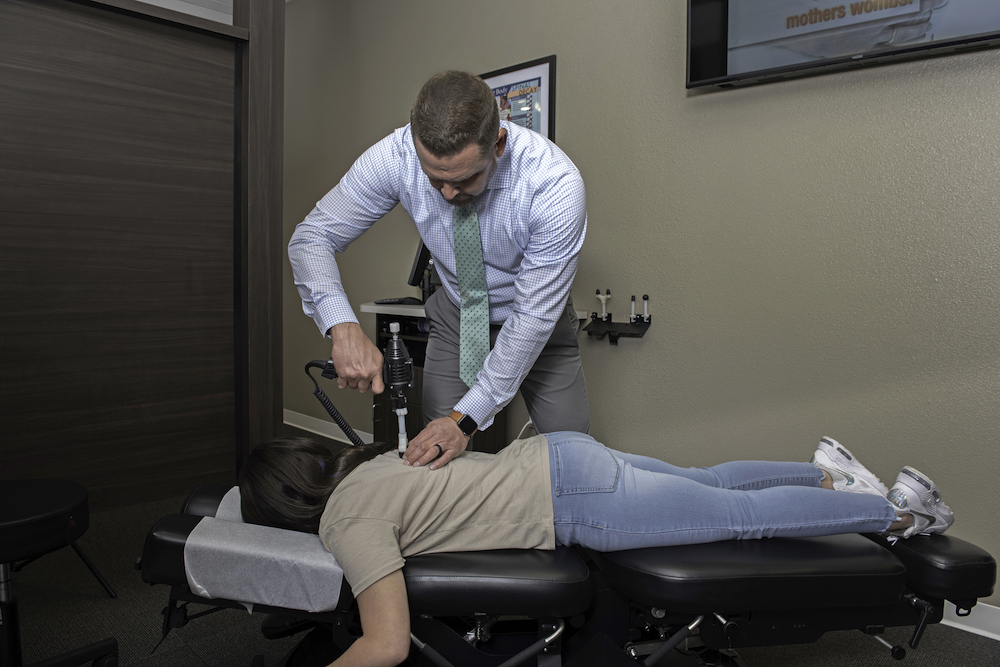6 Ways to Protect Your Back From Pain
3 min read

Your back is a source of strength and flexibility for your body. With many nerves that run through the spine and into the rest of your body, it's important to keep your back healthy and strong. Often, people experience back pain while lifting heavy objects or twisting in a certain direction. This can cause muscles or ligaments to stretch or tear. Repetitive stress and poor posture can also lead to muscle strain and other problems with the soft tissue.
In addition to keeping you from working and functioning the way you need to, untreated back pain can also lead to other health problems like reduced mobility and weight gain due to an inability to exercise. That's why protecting your back is essential to maintaining a healthy, productive lifestyle. Here are some ways you can protect your back and prevent pain and discomfort.
1. Stretch Often
Since many instances of back pain are caused by having tight muscles, stretching can help. When muscles remain tight, they can add stress to the entire spine and cause unnecessary pain and discomfort. By keeping your muscles loose with regular stretching, you can help keep your spine in good shape. Here are a few stretching exercises you could try.
- Knee to Chest — Lie flat on your back. Bend one leg at the knee while keeping the other straight. Pull the bent knee up toward your chest, hold, and release. Perform the same steps with the other leg and repeat the process.
- Chin to Chest — Bring your chin toward your chest by gently bending your head forward.
- Back Flexion Stretch — While lying on your back, pull both knees toward the chest and flex your head forward until you feel a slight stretch across your lower back.
2. Strengthen Your Core Muscles
Although exercising when you have back pain can seem difficult, the truth is that exercise is a great way to strengthen the muscles around your abdomen and spine. In addition to providing support for your lower back, the core muscles in your body can help prevent injury. Low impact exercises can strengthen your core muscles and increase blood flow to your spine.
If you are experiencing back pain, consult your healthcare professional before beginning exercises for the first time. Once your doctor says it's safe to exercise, begin slowly by setting small, achievable goals, and then begin to introduce a higher impact workout as you feel comfortable. Some core strengthening exercises that may help reduce back pain include:
- Low-impact cardiovascular exercises like walking
- Water therapy, which consists of exercise that can be done on your own or in a class-like setting at your local pool or health club.
- Push-ups
- Planks
3. Practice Good Posture
Good posture is crucial to the health of your back. Some ways to maintain good posture include:
- Sitting properly - When you sit in a chair, make sure it has a straight back or comes equipped with lower back support. Your knees should be a little higher than your hips while seated. Rest your feet on a stool if necessary.
- Standing correctly - When standing for long periods, keep your head up and your stomach pulled in. Try to stand with your feet shoulder width apart and allow your arms to hang naturally at your sides.
4. Adjust Your Sleeping Position
Especially if you're prone to back pain, sleeping on your side with your knees pulled up toward your chest is a good way to help prevent unnecessary discomfort. However, like many people, you may feel more comfortable sleeping on your back. If so, you can put one pillow under your knees while keeping your legs slightly bent. Place another pillow under your lower back for extra support. Sleeping on your stomach is not recommended, but if it is the only way you can sleep, placing a pillow under your hips may help prevent pain and discomfort for your back.
5. Consider Your Bags and Footwear
If you have frequent or chronic back pain, you may want to take a look at the bags you carry and the shoes you wear. Shoes should be supportive and comfortable, especially if you know you'll be carrying a heavy load like a diaper bag or backpack. Here are a few tips to help you pick the right bags and footwear to prevent back pain:
- Avoid heels that are higher than one inch.
- If you carry a briefcase, choose one with a wide, adjustable strap.
- When carrying a bag without a shoulder strap, be sure to switch hands frequently so one side of your body does not have to take all of the stress.
6. Get a Massage
Everyday life can wreak havoc on your muscles, causing significant tightness. Fortunately, you can help alleviate tight, sore muscles through massage, which may make you less likely to have back pain.
Whether you're experiencing back pain for the first time or you've been suffering for years, Village Chiropractic is here to help.





